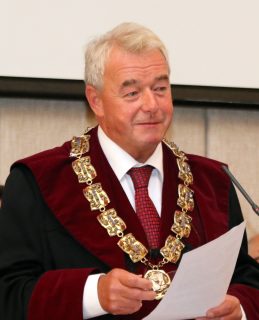Welcome
 Dear Reader, you are about to get a glance at the past centuries and the everyday life of one of Europe oldest veterinary training establishments, the University of Veterinary Medicine Budapest, that has just regained its independence and where centuries-old traditions and our ancestors’ legacy are kept alive.
Dear Reader, you are about to get a glance at the past centuries and the everyday life of one of Europe oldest veterinary training establishments, the University of Veterinary Medicine Budapest, that has just regained its independence and where centuries-old traditions and our ancestors’ legacy are kept alive.
There have been a lot of changes in the past decades but our general principles have remained the same since 1787. Our aim today is still to train veterinarians who are able to face competition in every segment of the veterinary profession.
Veterinary training in Hungary is available in three languages; apart from the Hungarian programme, we can offer English and German programmes to students coming from around 60 countries of the world who well outnumber the Hungarian students.
When other Hungarian universities are struggling to be among the best in the world, having been accredited by EAEVE our alma mater already occupies a leading position in Europe.
We are grateful to everyone who supported us with enthusiasm and faith in our future. Many have recognized that we are in a unique position, since, being the one an only establishment for veterinary education in Hungary, professionally we are only comparable to veterinary schools abroad.
Dr. Péter Sótonyi, rector of the University
